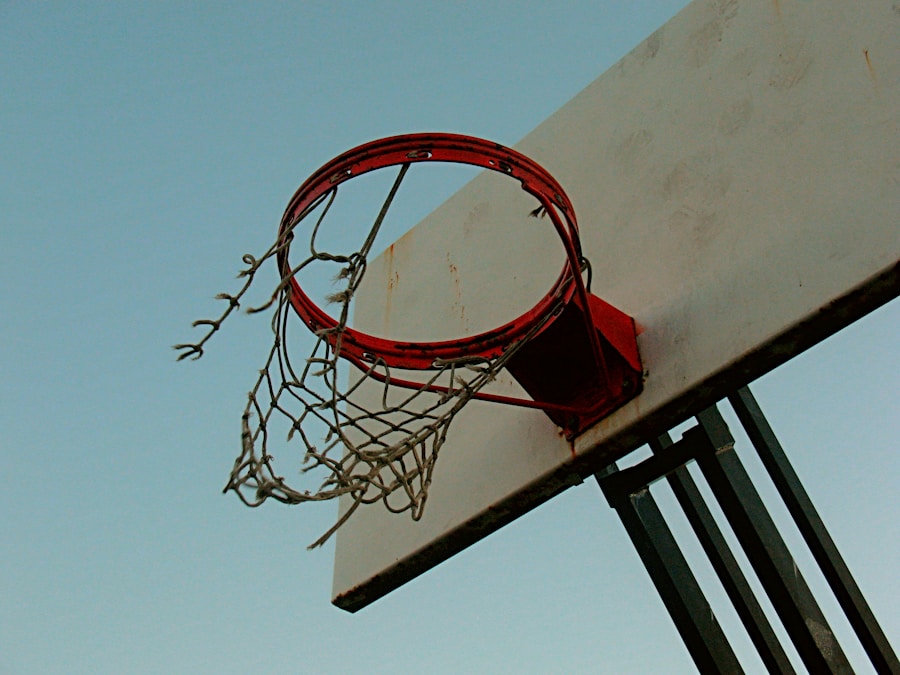Download links
How to install Mastering the Art of Basketball: Tips for Success APK?
1. Tap the downloaded Mastering the Art of Basketball: Tips for Success APK file.
2. Touch install.
3. Follow the steps on the screen.
Description
The foundation of any successful basketball player lies in mastering the fundamental skills of the game. These fundamentals encompass a range of techniques, including dribbling, passing, shooting, and footwork. Each of these skills is essential not only for individual performance but also for contributing to the overall dynamics of a team.
For instance, a player who excels in passing can create opportunities for teammates, facilitating a more fluid and effective offensive strategy. Therefore, dedicating time to practice these core skills is crucial for any aspiring athlete. To develop these fundamentals, players should engage in repetitive drills that focus on each skill.
For example, dribbling drills can include cone weaving, where players navigate through a series of cones while maintaining control of the ball. This exercise not only enhances ball-handling skills but also improves agility and coordination.
By focusing on these foundational elements, players can build a solid skill set that will serve them throughout their basketball careers.
Key Takeaways
- Developing fundamentals is crucial for building a strong foundation in basketball.
- Improving shooting technique involves practicing proper form and consistency.
- Enhancing ball handling skills requires drills and exercises to improve control and agility.
- Understanding defensive strategies is essential for effectively guarding opponents and preventing scoring.
- Building endurance and strength through conditioning and weight training is important for peak performance on the court.
- Mental preparation and focus are key for maintaining composure and making quick decisions during games.
Improving Shooting Technique:
Developing a Shooting Routine
In addition to physical mechanics, players must also develop a consistent shooting routine. This routine can include specific warm-up shots from various spots on the court, gradually increasing in difficulty.
Simulating Game Situations and Analyzing Performance
Incorporating game-like scenarios into practice—such as shooting under pressure or after making a move—can also help players adapt their shooting technique to real-game situations. Furthermore, analyzing shooting performance through video review can provide valuable insights into areas for improvement. By focusing on both the technical and psychological aspects of shooting, players can enhance their scoring ability and become more reliable offensive threats.
Enhancing Ball Handling Skills:

Ball handling is another critical component of basketball that can set players apart from their competition. Effective ball handling allows players to create their own shot opportunities, navigate through defenses, and maintain possession under pressure. To enhance ball handling skills, players should engage in a variety of drills that challenge their control and dexterity with the basketball.
For example, practicing crossovers, behind-the-back dribbles, and spin moves can help players develop a diverse skill set that keeps defenders guessing. Moreover, incorporating both stationary and dynamic ball-handling drills into practice routines is essential. Stationary drills might include dribbling with two basketballs or performing figure-eight patterns around the legs to improve hand-eye coordination.
Dynamic drills could involve navigating through defenders or cones while executing different dribbling techniques at varying speeds. Additionally, players should focus on using both hands equally to become more versatile on the court. By consistently working on ball handling, players can increase their confidence and effectiveness in offensive situations.
Understanding Defensive Strategies:
| Defensive Strategy | Metrics |
|---|---|
| Market Share Protection | Percentage of market share retained over time |
| Brand Reputation | Number of positive vs. negative brand mentions |
| Risk Management | Number of identified risks and mitigation plans |
| Competitive Analysis | Comparison of market position against competitors |
| Legal Compliance | Number of legal issues resolved and compliance rate |
A comprehensive understanding of defensive strategies is vital for any basketball player looking to excel in the game. Defense is not merely about individual effort; it requires teamwork, communication, and strategic thinking. Players must learn various defensive schemes such as man-to-man defense, zone defense, and pressing tactics.
Each strategy has its strengths and weaknesses, and understanding when to employ them can be the difference between winning and losing a game. For instance, man-to-man defense involves each player being responsible for guarding a specific opponent, which requires strong individual defensive skills and awareness of one’s surroundings. On the other hand, zone defense allows players to cover specific areas of the court rather than individual opponents, which can be effective against teams with strong shooters or when trying to protect the paint from drives.
Players should also practice defensive footwork and positioning to ensure they can effectively contest shots and disrupt passing lanes. By developing a solid grasp of defensive strategies and honing their individual defensive skills, players can become invaluable assets to their teams.
Building Endurance and Strength:
Physical conditioning is an often-overlooked aspect of basketball training that plays a crucial role in a player’s performance on the court. Building endurance and strength not only enhances overall athleticism but also reduces the risk of injury during games and practices. A well-rounded conditioning program should include cardiovascular training, strength training, and flexibility exercises tailored specifically for basketball players.
Cardiovascular endurance can be developed through activities such as running or interval training that mimic the stop-and-go nature of basketball. For example, incorporating sprints followed by periods of rest can help simulate game conditions where players must quickly transition between offense and defense.
Exercises like squats, lunges, and plyometric drills can significantly enhance a player’s explosiveness on the court. Additionally, flexibility training through stretching or yoga can improve range of motion and prevent injuries. By prioritizing endurance and strength training, players can elevate their performance levels and sustain their energy throughout games.
Mental Preparation and Focus:

The mental aspect of basketball is just as important as physical skills; mental preparation and focus can greatly influence a player’s performance during games. Developing a strong mental game involves cultivating confidence, resilience, and concentration under pressure. Players should engage in visualization techniques where they mentally rehearse successful plays or scenarios they may encounter during games.
This practice not only boosts confidence but also prepares them for high-pressure situations. Moreover, mindfulness techniques such as meditation or breathing exercises can help players maintain focus during games. These practices allow athletes to clear their minds of distractions and concentrate on the task at hand—whether it’s making a crucial free throw or executing a defensive play.
Additionally, setting specific goals for both practice sessions and games can provide motivation and direction for improvement. By integrating mental preparation into their training routines, players can enhance their overall performance and develop the mental toughness necessary to succeed in competitive environments.
If you’re a basketball fan looking for a break from the court, you might want to check out this article on exciting games with the best graphics. It’s always fun to explore different forms of entertainment, and high-quality graphics can really enhance the gaming experience. So take a break from shooting hoops and dive into a visually stunning virtual world!
FAQs
What is basketball?
Basketball is a team sport in which two teams, typically consisting of five players each, compete to score points by shooting a ball through the opposing team’s hoop.
What are the basic rules of basketball?
The basic rules of basketball include dribbling the ball while moving, shooting the ball into the opposing team’s hoop, and playing defense to prevent the opposing team from scoring.
What equipment is needed to play basketball?
The main equipment needed to play basketball includes a basketball, a hoop, and a court with marked boundaries. Players also wear basketball shoes and may use other protective gear such as knee pads.
What are the positions in basketball?
The typical positions in basketball are point guard, shooting guard, small forward, power forward, and center. Each position has specific roles and responsibilities on the court.
What are the dimensions of a basketball court?
A standard basketball court is 94 feet in length and 50 feet in width, with a hoop located 10 feet above the floor. The court is divided into two main sections, with various lines and markings indicating boundaries and key areas.
What are the most common fouls in basketball?
Common fouls in basketball include personal fouls, technical fouls, and flagrant fouls. Personal fouls are the most common and include illegal physical contact with an opponent.
What are some famous basketball leagues and tournaments?
Some famous basketball leagues and tournaments include the National Basketball Association (NBA) in the United States, the EuroLeague in Europe, and the FIBA Basketball World Cup. College basketball in the US is also popular, with the NCAA tournament being a major event.
What are some famous basketball players?
Some famous basketball players include Michael Jordan, LeBron James, Kobe Bryant, Shaquille O’Neal, and Magic Johnson. These players have achieved great success and are considered legends in the sport.





